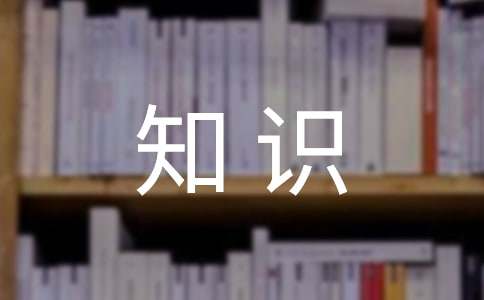基础英语知识点
词汇
1. want a go 要试一试,go在短语中作名词,want a go=want a try=want to have a go/try.

(1)Let him have a go/try.让他试一试。
(2)Do you want a go/try at flying a kite?你想试一下放风筝吗?
2. do 表示"做"、"干"时,是实义动词,为及物动词。其作助动词时,本身用于除第三人称外的其他各人称,其否定式为don't=do not.
(1)Who can do it?谁能做这件事?
(2)I don't like you.我不喜欢你。
(3)Do you go to school on foot?你步行上学吗? Yes, I do./No, I don't.
3. Easy 形容词,容易的,其反义词是difficult或hard(困难的.)。
(1)It is easy/hard/difficult.
(2)I can't play football. It's too hard.我不会踢球,太难了。(It代替play football)
(3)Can you fly a kite? Yes. It's too easy.你能放风筝吗?可以,太容易了。
4. With 介词,其意思有
(1)表示"带着";
Please take a sweater with you.请带上一件毛衣。
(2)表示"和……在一起";
Mum is with Grandma at home.妈妈在家里和奶奶在一起。
(3)表示"具有"、"带有";
He'd like a glass of tea with sugar.他要一杯加糖的茶/糖茶。
(4)表示"以……"、"用……"。
He writes with his left hand.他用左手写字。
5. hard 可作副词,意思可为"努力地、卖力地、拼命地、猛烈地"等;也可作形容词用,意思可为 "困难的、硬的"
(1)All the students study hard at school.所有学生在学校都努力学习。
(2)Some of the apples are hard to reach.有些苹果很难够着。
6. tall和high的区别
(1)说人,动物,树木等有生命的东西,主要用tall,不用high
a tall woman 一个高个子妇女
a tall horse 一个高大的马
(2)说一个不与地面接触的人和物的高时,要用high,而不用tall,比如人站在桌子上时,飞机飞上天时
He is high up in the tree.他高高地爬在树上。
The plane is so high in the sky.飞机在空中这么高。
(3)指建筑物、山时要tall或high都可以,不过high的程度比tall高。
(4)high可作副词,tall不能。
(5)tall的反义词为short, high的反义词为low。
句型
1. Ling Feng, David and some other boys are playing basketball. 只能说some other boys, 不能说other some boys。表示数量的词和other 连用时,数词须位于other 之前,不能位于后。
(1)Many other classmates do the work with us. 许多别的'同学也与我们一块儿做这工作了。
(2)Three other boys help her carry the banana baskets.另外三位男孩帮她搬香蕉篓子。
2. Come on! Come on主要用于口语中以表示催促、劝说、激励、有不要犹豫毫不耽搁之意思。
(1)Come on .It's raining. 快。天下雨了。
(2)Oh, come on, Li Dong, come on. Sing a song for us. 来吧,李东,来吧。给我们唱首歌吧。
3. You see, I'm not good at basketball. be good at常用来表示某人"在某方面做得好"或"擅长于",英文解释为do well in,介词at后常接名词或动词ing形式,例如:
(1)She's good at Chinese, but not good at English. 她中文很好,但英语不好。
(2)Mr. Green is good at drinking coffee, but sometimes he drinks tea. 格林先生爱喝咖啡,但有时他也喝茶。
4. I don't like it very much.very much通常只修饰动词,不能修饰形容词或副词,所修饰的动词通常是一些情感性的动词,如want, like, thank, love, enjoy等。
(1)It is a very nice picture. 那是一张很不错的画。
(2)Mrs. Read wants very much to see you. 里德夫人很想见你。
5. You can pass the ball bike this. pass sb. sth.= pass sth. to sb.意思是"把某物传给某人"。
Please pass me that pen.= Please pass that pen to me. 请把那支钢笔递给我。
6. Throw it like this.like this/ that意思是"像这样/那样",这里like是介词,表示"像……一样",后面一般接名词或代词,like介词短语在句中可作状语,定语或表语。例如:
(1)Don't write like that. 不要那要写。(作状语)
(2)Jach has a hat like a dog.杰克有一顶像狗的帽子。(作定语) 乔长得像他父亲。(作表语)
语法
1. 祈使句
祈使句表示请求、命令等,它的主语you一般要省略,谓语动词必须用动词原形,句末用惊叹号或句号,用降调朗读,其结构为"v.+…"。祈使句的否定句只需在肯定式的谓语动词前加上don't即可,其结构为"Don't+v.+…"。
例如:
Sit down, please. 请坐。
Don't be nervous! 别紧张!
2. can和could
(1) can表示体力和脑力方面的能力,或根据客观条件能做某种动作的"能力"。例如:
Can you ride a bike? 你会骑自行车吗?
What can I do for you? 要帮忙吗?
Can you make a cake?你会做蛋糕吗?
(2) can用在否定句和疑问句中时有时表示说话人的`"怀疑""猜测"或不肯定。例如:
Where can he be?他会在什么地方呢?
Can the news be true?这个消息会是真的吗?
It surely can't be six o'clock already?
不可能已经六点钟了吧?
You can't be hungry so soon,Tom,you've just had lunch.
汤姆,你不可能饿得这么快,你刚吃过午饭。
What can he mean?他会是什么意思?
在日常会话中,can可代替may表示"允许",may比较正式。例如:
① You can come in any time.你随时都可以来。
② --- Can I use your pen?
--- Of course,you can.
---我能用你的钢笔吗?
---当然可以。
③ You can have my seat,I'm going now.
我要走了,你坐我的座位吧。
(3) could
could 是 can的过去式,表示过去有过的能力和可能性,还有怀疑和不肯定的意思(在否定和疑问句中)。例如:
The doctor said he could help him.(能力)
医生说他能帮助他。
Lily could swim when she was four years old.(能力)
当丽丽四岁的时候她就会游泳。
At that time we thought the story could be true.(可能性)
那时我们以为所说的可能是真的。
could可代替can表示现在时间的动作,但语气较为婉转。例如:
Could I speak to John,please?
我能和约翰说话吗?
Could you?在口语中表示请求对方做事。例如:
Could you wait half an hour?
请你等半个小时好吗?
Could you please ring again at six?
六点钟请你再打电话好吗?
(4) can的形式
只有现在式can和过去式could两种形式。能表示一般现在和一般过去两种时态,有时也能表示将来。所有其他时态(包括将来时)须用be able to加动词不定式来表示。例如:
They have not been able to come to Beijing.
他们没有能到北京来。
日常交际用语
1. That's right.
That's right意为"对的",表示赞同对方的意见、看法或行为,肯定对方的.答案或判断,其相反的表达是That's wrong.有时That's right.=You are right. That's wrong.=You're wrong.
例如:
(1) "I think we must help the old man.""我想我们应该帮助这位老人。"
"That's right."或 "You're right.""说得对"。
(2) "Ten and one is eleven." "that's right."
"10+1=11"."你是对的?
2. That's all right.
That's all right.意为"不用谢"、"没关系",用来回答对方的致谢或道歉。
例如:
(1) "Many thanks." "That's all right."
(2) "Sorry. It's broken." "That's all right."
3. All right.
All right.意为"行了"、"可以",表示同意对方的建议或要求。有时还可以表示"身体很好"。
例如:
(1) "Please tell me about it." "请把此事告诉我。"
"All right.""好吧。"
(2)Is your mother all right?你妈身体好吗?
【基础英语知识点】相关文章:
基础英语必会知识点总结07-30
英语语法基础知识点大全03-07
模具基础英语03-11
英语基础入门05-25
古代汉语的基础知识点07-17
自学英语的基础方法09-11
计算机应用基础知识点03-16
必备英语基础语法知识10-19
英语语法基础入门02-06
基础英语单词分类08-29